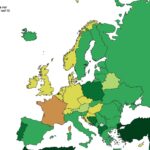From Highland Peaks to Lowland Valleys: Mapping the World’s Coffee and Tea Territories
Coffee and tea aren’t just drinks; they’ve become part of everyday life across cultures. A cup of tea might be the first thing someone shares with a guest in Turkey, while a strong coffee is what keeps office workers moving in New York or São Paulo. Tea has been traded for thousands of years, its story tied to caravans and ships moving along ancient routes. Coffee’s journey is different: it began in Ethiopia, spread through the Middle East, and later became the drink of choice in Europe and the Americas.
For a long time, tea was the world’s daily staple. But over the last century, coffee has caught up. In 2023, people worldwide consumed about 10.71 billion kilograms of coffee, compared with 7.09 billion kilograms of tea. Put another way: for every three cups of tea poured, nearly five cups of coffee are brewed.
To show how these crops are grown, I created a series of maps using SPAM 2020 V2r0 data (IFPRI, 2025).
Coffee on the Move
Coffee travels across borders on a massive scale. Brazil is the undisputed leader in exports, followed by Vietnam, Colombia, and Indonesia. On the importing side, the United States, Germany, Italy, and Japan take in the largest volumes, fueling both café culture and at-home brewing.
When we talk about coffee, we’re really talking about two main species. Arabica beans are lighter on the palate, sometimes described as having fruity or floral tones, and often brewed for their brightness and complexity. Robusta beans, on the other hand, bring more punch – twice the caffeine, a stronger body, and resilience in the field that makes them easier and cheaper to grow. That’s why Arabica fills most specialty coffee bags, while Robusta often ends up in instant jars, espresso blends, and affordable supermarket roasts.
Arabica Coffee
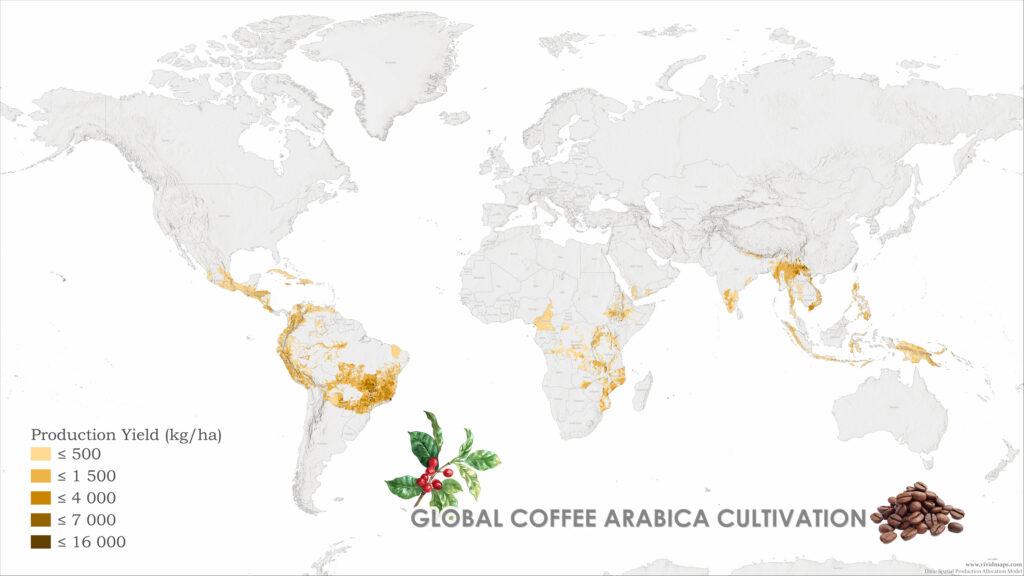
Brazil sets the pace for Arabica cultivation, producing close to a third of the beans sold worldwide. Colombia is not far behind – its reputation for smooth, balanced coffee has been built over decades of careful farming in the Andes. Ethiopia holds a special place: not only is it the birthplace of coffee, but it still grows an extraordinary range of local Arabica varieties, many unique to its highlands. Honduras, too, has moved from a secondary role into the spotlight, with exports climbing steadily in the last few decades.
It’s worth noting that although the U.S. buys more coffee than any other country, much of what Americans drink are blends of Arabica and Robusta. By contrast, French and Japanese consumers often prefer pure Arabica.
Robusta Coffee
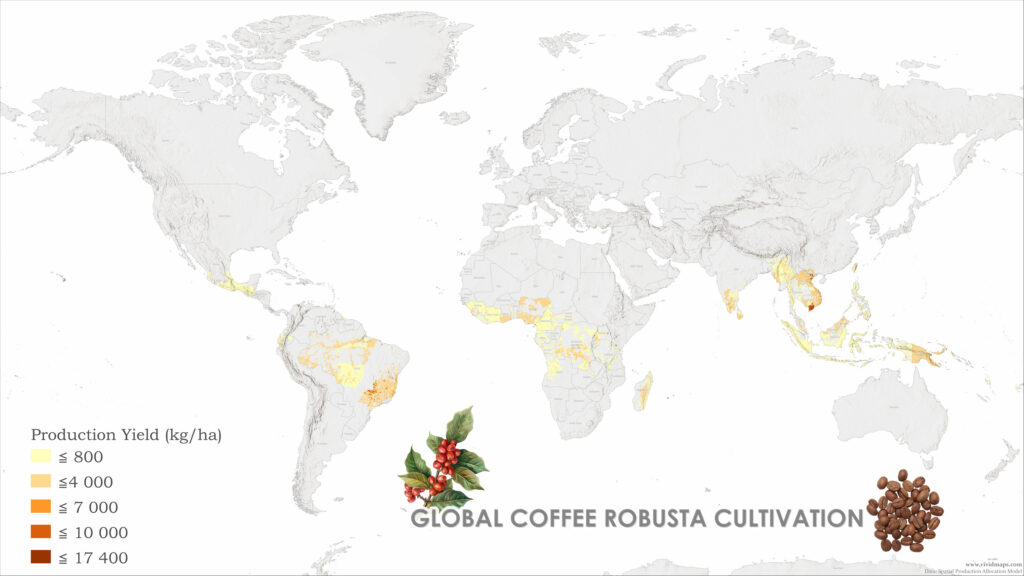
Vietnam leads the world in Robusta farming, with its Central Highlands transformed into one of the most productive coffee regions on earth. Brazil also produces large volumes – its Robusta, called Conilon, plays an important role in both local and international markets. Indonesia, India, and Uganda round out the group of major producers.
Here’s something worth knowing: in Italy, even though espresso is strongly associated with Arabica, most roasters blend in Robusta. The reason isn’t just cost – Robusta helps create the thick crema, that golden layer of foam on top of a proper espresso shot.
Arabica and Robusta Together
To put the two side by side, I made a combined map showing regions where each type of coffee is grown.
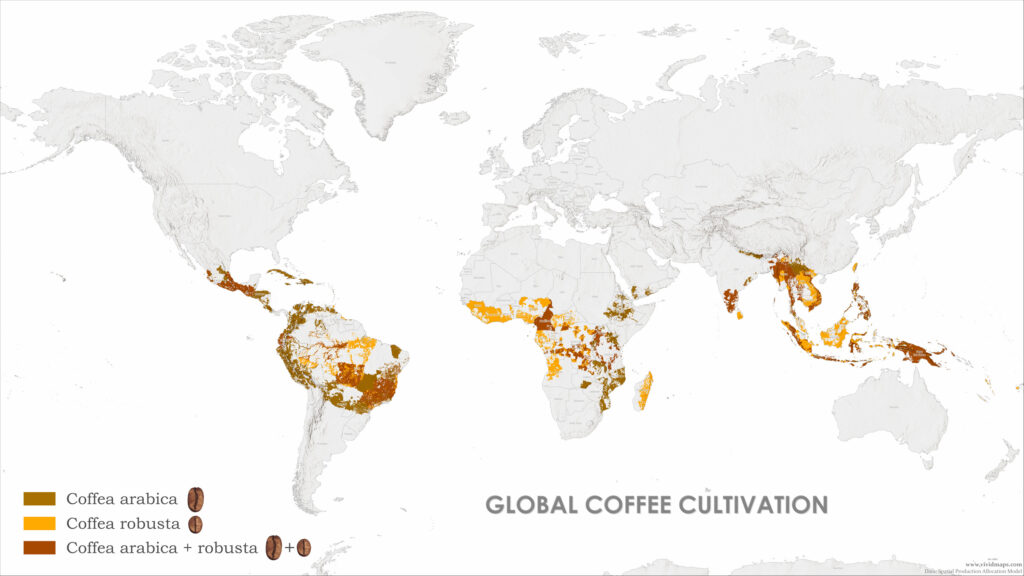
Arabica has found its sweet spot in the cool highlands – think the Andes or East Africa – flourishing wherever altitude creates just the right mix of temperature and rainfall. Robusta takes a different approach, settling into the warmer lowland areas of Southeast Asia and parts of Africa, thriving in conditions that would leave Arabica struggling.
Tea: A Different Tradition
Tea brings another flavor to the table – literally and culturally. It has less caffeine than coffee, is often more affordable, and offers endless styles depending on how leaves are processed: green, black, oolong, white, or pu-erh.
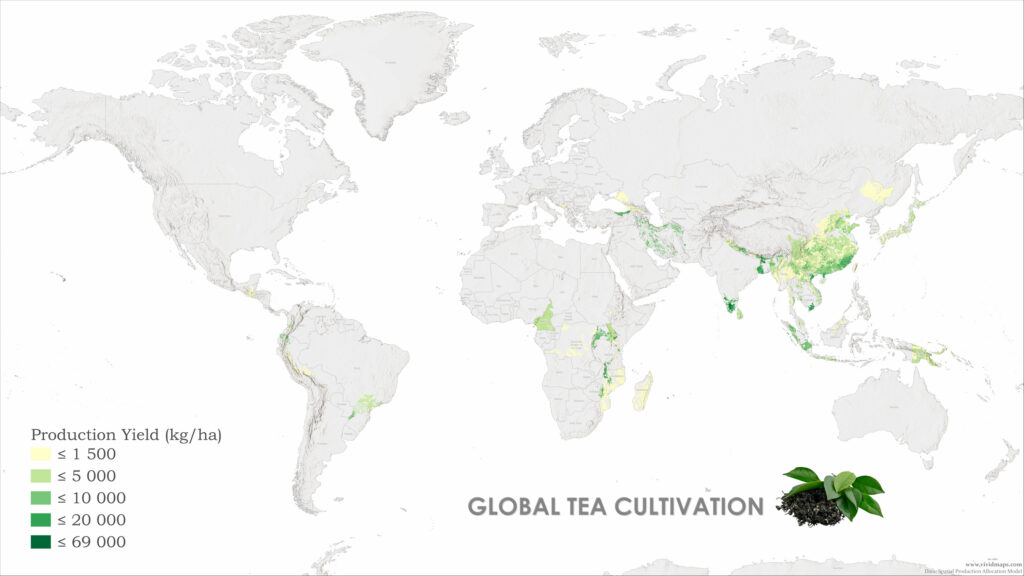
Most of the world’s tea comes from Asia, with China and India far ahead in total production. Kenya, though much smaller in size, is a giant in exports, especially black tea, which makes its way into millions of breakfast blends worldwide. Turkey is another standout – not for sheer output, but for the intensity of its tea culture. The average person there drinks more than three kilograms of tea a year – the highest per-capita consumption anywhere.
Countries That Grow Both
A handful of countries cultivate both crops, often in very different regions. India does this on a large scale, with tea plantations in Assam and Darjeeling, and coffee farms scattered across the southern states. Vietnam grows Robusta in the Central Highlands while producing tea in the north. In East Africa, Kenya and Uganda are important players in both markets.
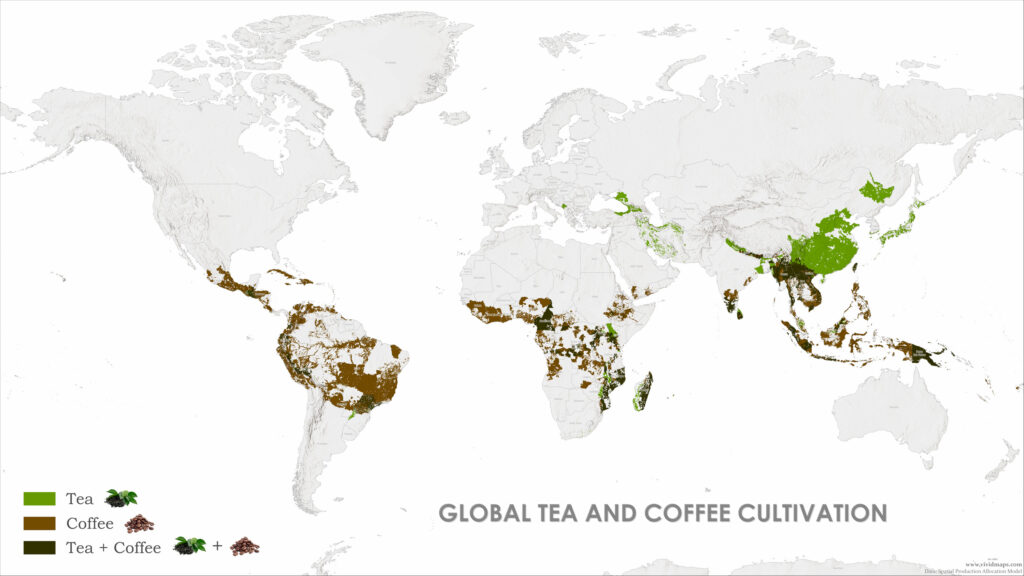
Coffee and tea shape habits in different ways, but they share one thing in common: both connect us to landscapes and farming traditions far beyond our own kitchens. The next time you pour yourself a cup, it’s worth pausing to think about the journey those leaves or beans took to get there.






